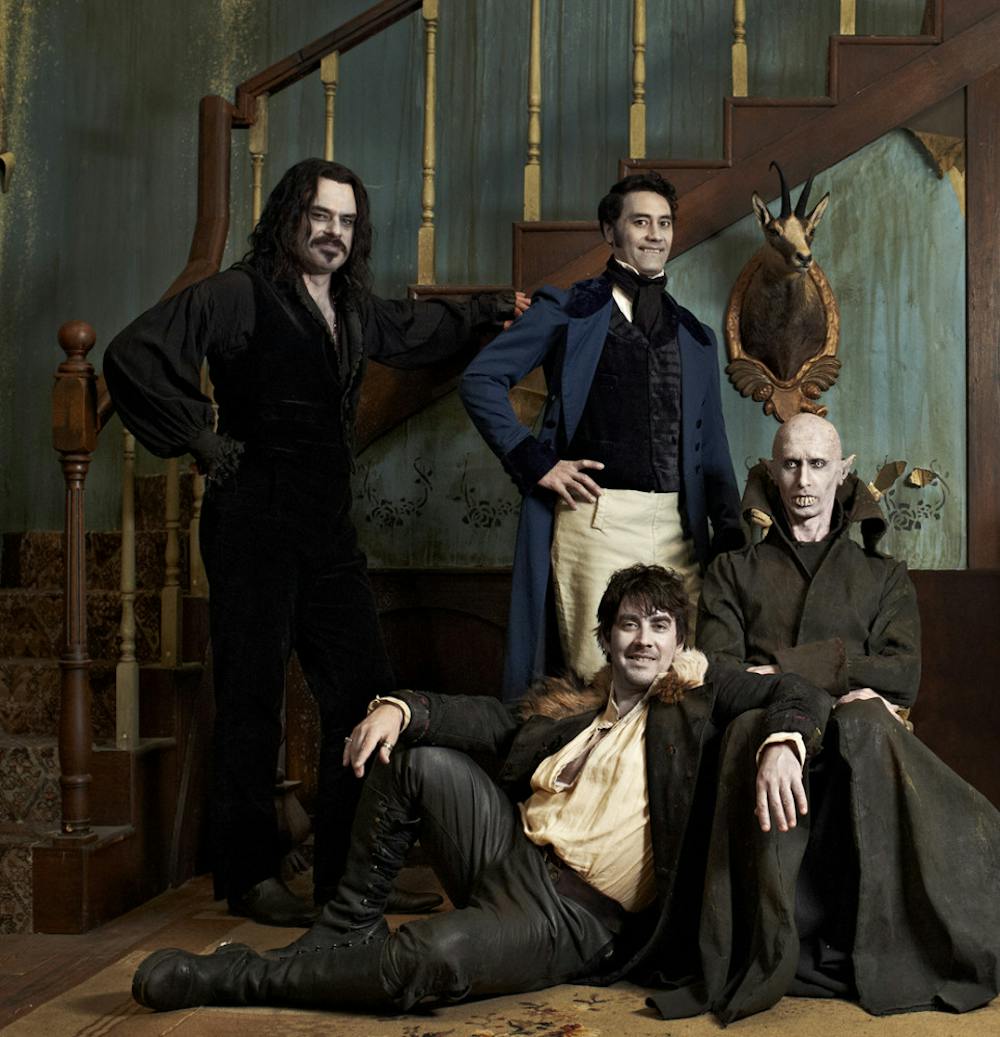In the past year, the box office has seen movies chronicling life stories of success and describing the accomplishments of older or deceased members of society. In contrast, Taika Waititi’s and Jemaine Clement’s “What We Do in the Shadows” documents the lives of the undead — of vampires living in a flat in Wellington, New Zealand.
Waititi and Clement have previously worked together as the faux singer-songwriter duo, Flight of the Conchords. Co-writing and co-producing the film, Wiatiti and Clement also star as Vladislav and Viago, two of the three main vampires.
In what can best be described as a “mockumentary,” the film finds humor in life’s mundane activities. Audience members will laugh equally at these quotidian events and at the unique struggles of vampires, being centuries old, out of touch and living a nocturnal lifestyle on a diet of human blood.
Viago acts as a mother of sorts, waking up all of his flat-mates for a “flat meeting” to discuss chores and responsibilities: The dishes haven’t been done in five years; the furniture will be permanently red if bloodstains are not taken care of more quickly; the rent is late. The vampires develop a laughable relationship with their mortal servant Jackie, played by Jackie Van Beek, who supplies them “dinner” and acts as their contact with the human world in the hopes of one day gaining eternal life.
Older members of the audience will sympathize with the vamps as they attempt to learn modern technology from their sole human friend Stu, portrayed by Stu Rutherford, while younger members will sympathize with the vamps’ poor social skills with the ladies.
The film’s abundant and clever humor almost conceals its disjunctive plot. Viago has an unrequited love, the clan is nearly exposed for what they are and a new vampire, Cori Gonzalez-Macuer’s Nick, joins the flat, altering the dynamics of the group. The plot’s resolutions to these conflicts are too predictable, but the humor accompanying them keeps the film from seeming banal.
While “What We Do in the Shadows” documents the vampires’ struggles, it riffs on the common behaviors of humans, portraying ordinary life struggles in the extreme. Audience members may see a hint of themselves in the vampires’ attempts to dress to go out for the evening. Lacking reflections, the vamps rely on their flatmates’ opinions, century-old style and poorly made sketches. The filmgoers will laugh at their own attempts to impress dinner guests as they watch the vamps dump cold, canned spaghetti on their guests’ dinner plates.
Waititi and Clement skillfully use their mockumentary of vampire life among mortals as a tool to encourage us to realize the ironic triviality in perceived social obstacles. At least we can eat without committing murder and enjoy the sunshine without being burnt to ash.
“What We Do in the Shadows” will be playing at the Cable Car Cinema through April 2.





